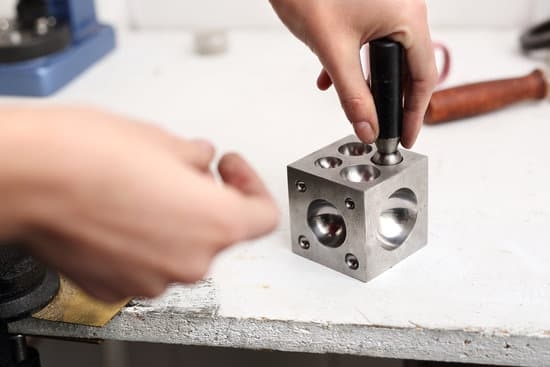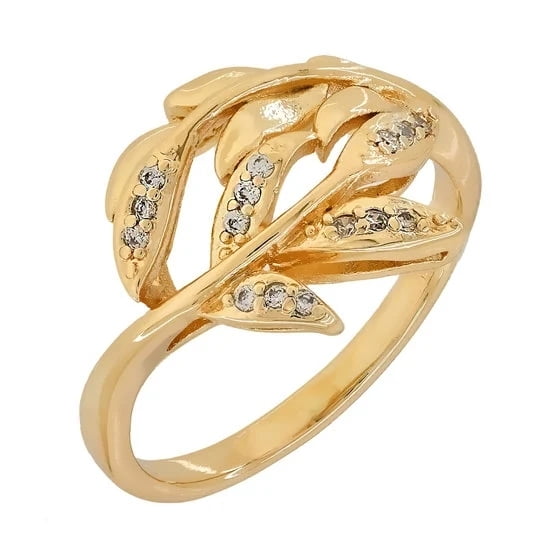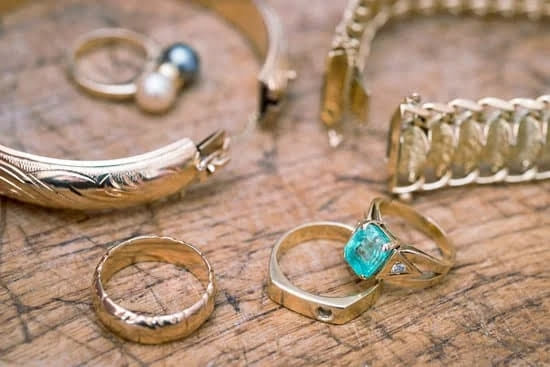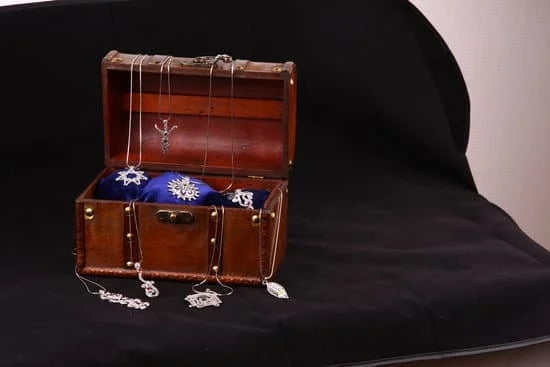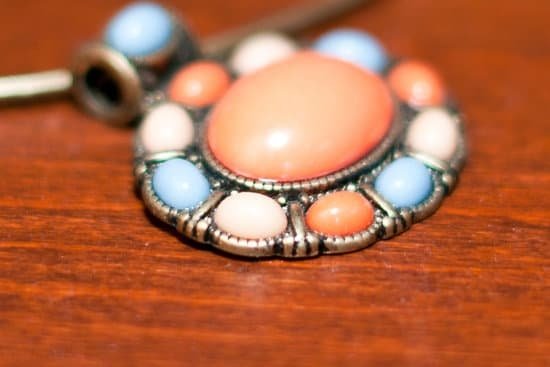Jewelry findings beading is an essential aspect of creating intricate and beautiful jewelry pieces. Findings refer to the various components like clasps, jump rings, and ear wires that are used to connect different parts of a piece together. These findings not only serve a functional purpose but also add aesthetic value to the design. In the world of beading, selecting the right findings can make all the difference in the final look and durability of a piece.
When it comes to beading, understanding the different types of jewelry findings available is crucial. From lobster clasps to leverback ear wires, each finding has its own unique function and style. Exploring these options allows beaders to tailor their designs according to their preferences and project requirements. Additionally, using high-quality findings is paramount in ensuring that the finished jewelry piece is both long-lasting and visually appealing.
Choosing the right findings for a beading project can sometimes be overwhelming with so many options available. Factors like material (gold, silver, or plated), size (small or large), and style (modern or vintage) all play a role in determining which findings will best complement the overall design. By understanding how these elements come together, beaders can create stunning pieces that reflect their creativity and attention to detail.
Types of Jewelry Findings
When it comes to the art of beading, understanding the different types of jewelry findings is essential to creating stunning and durable pieces. Jewelry findings are components that are used to connect various parts of jewelry together, such as clasps, jump rings, and ear wires. These findings not only serve a functional purpose but also add an aesthetic element to your designs. Here is a breakdown of some of the most commonly used types of findings in beading:
- Clasps: Clasps are essential for securing bracelets and necklaces around the wearer’s wrist or neck. They come in various styles, such as lobster clasps, toggle clasps, and magnetic clasps.
- Jump Rings: Jump rings are small metal rings that are used to connect different components of jewelry together. They are available in different sizes and can be opened and closed with pliers.
- Ear Wires: Ear wires are components that are attached to earrings to secure them in place on the wearer’s ears. They come in different styles, such as French hooks, lever backs, and studs.
Using the right type of findings can make a significant difference in the overall look and durability of your beaded jewelry pieces. It is crucial to choose high-quality findings that complement your design aesthetic while ensuring that they will securely hold your creations together. Whether you prefer classic or modern styles, there is a wide range of findings available to suit your needs.
Incorporating a mix of different types of findings into your beading projects can also add visual interest and versatility to your designs. By experimenting with various clasps, jump rings, and ear wires, you can create unique pieces that showcase your creativity and attention to detail. Remember to consider factors like material, size, and style when selecting findings for your projects to ensure that they enhance the overall look of your jewelry creations.
Importance of Quality Findings
When it comes to creating stunning jewelry pieces through beading, the quality of the findings used plays a critical role in the final result. High-quality jewelry findings not only enhance the overall look of the piece but also contribute to its durability and longevity.
Investing in top-notch findings ensures that your creations are not only visually appealing but also able to withstand daily wear and tear. Here are some reasons why using quality findings is essential for crafting professional-looking jewelry:
- Durability: Quality findings are typically made from materials such as sterling silver, gold-filled, or stainless steel, which are more resistant to tarnishing, corrosion, and breakage compared to cheaper alternatives.
- Aesthetics: High-quality findings often have a polished finish and precise detailing, adding an elegant touch to your design. This attention to detail can elevate a simple piece of jewelry into a sophisticated accessory.
- Functionality: Well-made findings fit together seamlessly, ensuring that clasps close securely, jump rings stay closed, and ear wires sit comfortably. This functionality not only enhances the overall look of the piece but also improves its wearability.
In addition to enhancing the appearance and durability of your jewelry pieces, using high-quality findings also helps maintain a professional standard in your work. Whether you are creating jewelry for personal use or selling your designs, investing in quality findings demonstrates your commitment to craftsmanship and attention to detail. Ultimately, incorporating top-notch findings into your beading projects can set your creations apart and help you establish a reputation for producing exceptional pieces within the jewelry-making community.
- Research: Before purchasing jewelry findings for your project, take the time to research different suppliers and read reviews from other beaders. Look for companies that offer high-quality materials and have a reputation for excellent customer service.
- Material Matters: Consider the material of the finding based on factors like skin sensitivity (e.g. hypoallergenic metals), desired finish (e.g. matte or shiny), and intended use (e.g. everyday wear or special occasions).
- Size and Style: Ensure that the size and style of the findings match well with the beads or components you are using in your design. Proportionate findings contribute to a harmonious look in the finished piece.
Choosing the Right Findings
Choosing the right jewelry findings for your beading project is crucial to ensure the final piece is not only aesthetically pleasing but also durable and long-lasting. When it comes to selecting findings, there are various factors to consider, such as material, size, and style.
One important factor to consider when choosing jewelry findings is the material they are made of. Common materials used for findings include sterling silver, gold-filled, base metals like copper or brass, and plated metals. Each material has its own unique characteristics in terms of durability, cost, and appearance. For example, sterling silver findings are a popular choice for their high quality and hypoallergenic properties, while base metal findings are more cost-effective but may tarnish over time.
In addition to material, the size of the findings plays a significant role in how they fit into your beading design. It is essential to match the size of your findings to the scale of your beads and overall design aesthetic. Choosing findings that are too large may overpower delicate beads, while too small findings can get lost within intricate designs. Finding the right balance in size will help enhance the overall look of your jewelry piece.
Consideration of style is also paramount when selecting jewelry findings for your beading project. Whether you prefer classic and elegant styles or modern and bold designs, there are numerous options available to complement your personal taste. From sleek minimalist clasps to ornate decorative jump rings, finding stylish pieces that align with your creative vision will elevate the final look of your beaded jewelry creation.
| Factors | Considerations |
|---|---|
| Material | Sterling silver, gold-filled, base metals like copper or brass |
| Size | Match findings size to scale of beads and overall design aesthetic |
| Style | Classic, elegant styles or modern bold designs; sleek minimalist vs ornate decorative options |
Tools for Working With Jewelry Findings
Working with jewelry findings in beading projects requires a set of essential tools to ensure precision and efficiency in creating beautiful pieces. One of the must-have tools for any beader is a good pair of pliers. Pliers come in various types, such as chain nose pliers, round nose pliers, and flat nose pliers, each serving different purposes like bending wires, opening and closing jump rings, and holding small components securely.
Another indispensable tool when working with jewelry findings is wire cutters. These are necessary for trimming excess wire or cutting chains to the desired length. It’s crucial to use sharp wire cutters to prevent fraying or damaging the wires during the cutting process. Investing in a quality pair of wire cutters can make a significant difference in the overall finish of your beaded jewelry pieces.
Bead boards are also an essential tool for organizing and designing your beading projects effectively. These boards have compartments for sorting out beads by size, color, or type, making it easier to plan out your designs before stringing them together.
Bead boards help prevent beads from rolling away while you work and enable you to measure out precise lengths for your creations. By having these tools at hand, you can enhance your beading experience and create professional-looking jewelry pieces with ease.
| Tools | Function |
|---|---|
| Pliers | Bending wires, opening/closing jump rings, holding small components |
| Wire Cutters | Trimming excess wire, cutting chains to desired length |
| Bead Boards | Organizing beads for design planning, preventing beads from rolling away |
Creative Ways to Use Findings in Beading
When it comes to creating stunning beaded jewelry pieces, the use of jewelry findings goes beyond just practical functionality. These small components serve as versatile elements that can elevate the overall design and add a unique touch to your creations. By thinking outside the box and exploring creative ways to incorporate findings into your beading projects, you can truly make your designs stand out.
Focal Points
One exciting way to use jewelry findings in beading is by making them the focal point of your design. Instead of merely using findings as connectors or closures, consider showcasing them front and center in your piece. For example, you can create a statement necklace by stringing together an assortment of eye-catching clasps or using a decorative jump ring as a prominent feature. This unexpected use of findings will draw attention and add visual interest to your jewelry.
Embellishments
Another creative approach to incorporating findings into your beading designs is by using them as embellishments. Think of findings as tiny pieces of artwork that can complement and enhance the beauty of your beads. Play around with layering different types of findings, such as filigree bead caps or flower-shaped clasps, to add texture and dimension to your creations. By strategically placing these embellishments throughout your design, you can create a more intricate and sophisticated look.
Mixed Media
Experimenting with mixed media is another fantastic way to infuse creativity into your beading projects using jewelry findings. Combine findings with other materials like leather cord, silk ribbon, or even fabric scraps to achieve a one-of-a-kind aesthetic.
For instance, try attaching metal charms or pendants to fabric strands for a bohemian-inspired bracelet or incorporating beads onto wire-wrapped findings for an eclectic pair of earrings. Mixing different elements will not only expand your design possibilities but also give your pieces a unique flair that sets them apart from traditional beaded jewelry.
Troubleshooting Common Finding Problems
Opening a Jump Ring
One common issue that beaders often encounter when working with jewelry findings is struggling to open a jump ring properly. Jump rings are used to connect different components of a piece together, and if not opened correctly, they can become misshapen or difficult to close securely.
To solve this problem, one effective technique is to use two pairs of pliers to hold each side of the ring and twist in opposite directions gently. This method helps maintain the round shape of the jump ring while allowing for easy opening and closing.
Soldering Clasps
Another frequent challenge faced by beaders is soldering clasps securely onto their jewelry pieces. Soldering can be tricky, especially for beginners, as it requires precision and heat control. To ensure a strong bond between the clasp and the jewelry item, make sure to clean both surfaces thoroughly before applying solder.
It is also helpful to use flux, which helps the solder flow smoothly and create a durable connection. Additionally, practice on scrap metal pieces first to perfect your soldering technique before working on your actual project.
Securing Bead Cord in Crimp Ends
When finishing off a beading project with crimp ends, some beaders may struggle with securing the bead cord firmly within the ends without it slipping out later on. To prevent this issue, try using crimping pliers specifically designed for this task. Place the crimp bead at the end of the cord inside the crimp end, then use the pliers to gently squeeze the crimp bead into place.
Ensure that there is enough pressure applied so that the cord is secure but not so much that it damages or cuts through it. Testing the strength of the connection by gently tugging on the cord before trimming any excess can also help verify its stability.
Resources for Finding Jewelry Findings
In the world of jewelry making and beading, the quality of jewelry findings used can truly make or break a piece. Whether you’re a seasoned beader or just starting out, having access to reputable online stores and suppliers for top-notch findings is crucial. By investing in high-quality materials, you can ensure that your creations not only look professional but also stand the test of time.
When it comes to finding the perfect jewelry findings for your projects, it’s important to do your research and choose suppliers known for their quality products. Look for stores that offer a wide range of findings in different materials, sizes, and styles to suit your specific needs. Additionally, reading reviews from other beaders can give you valuable insights into the reliability and quality of these suppliers.
Some popular online stores known for their excellent selection of jewelry findings include Beadaholique, Fire Mountain Gems, and Rio Grande. These suppliers offer everything from clasps and ear wires to unique embellishments that can take your beading designs to the next level. By shopping at trusted sources like these, you can have peace of mind knowing that you are using top-of-the-line materials in your creations. Remember, when it comes to jewelry findings beading, quality is key.
Frequently Asked Questions
What Are Findings in Beading?
Findings in beading refer to the components used in creating jewelry, such as clasps, ear wires, jump rings, and crimps. These findings are essential for bringing all the elements of a piece together and ensuring its durability.
Why Is It Called Jewelry Findings?
The term “jewelry findings” is used to describe the various parts and pieces that are necessary for constructing jewelry pieces. These findings are like the building blocks of a design, providing structure and functionality to the finished product.
Which Beads Can Give Your Jewelry a Beautiful Natural Look?
Beads such as wood, stone, shell, or bone can give your jewelry a beautiful natural look. These materials add an organic feel to your designs and can complement other elements like metal charms or crystals. Using these beads can bring a unique touch to your jewelry creations.

Welcome to my jewelry blog! My name is Sarah and I am the owner of this blog.
I love making jewelry and sharing my creations with others.
So whether you’re someone who loves wearing jewelry yourself or simply enjoys learning about it, be sure to check out my blog for insightful posts on everything related to this exciting topic!

